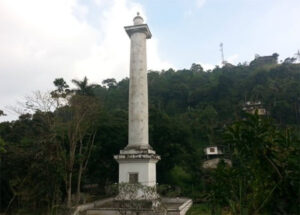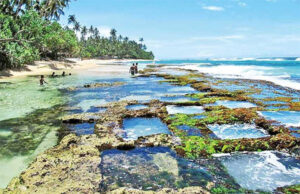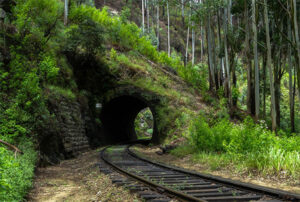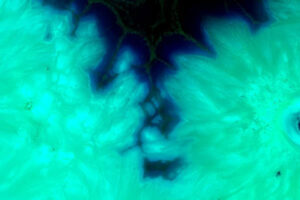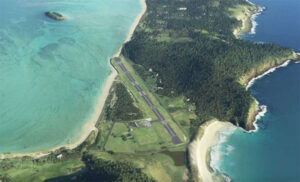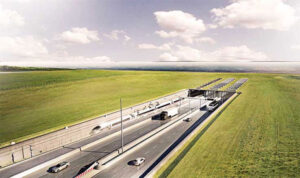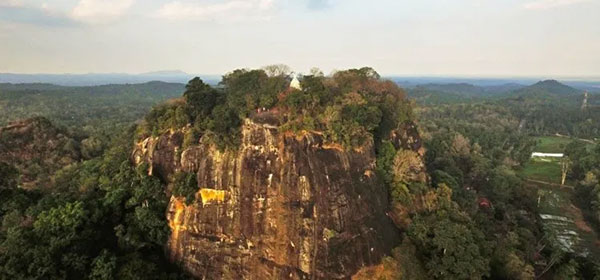
After traveling about 2km from Beliatta road in Weeraketiya town to the North Giruwapattu of Ruhunu town, the Pattala Mulgirigala Raja Maha Viharaya is found as a Buddhist site of ancient religion. The temple is nearly 700 feet high and surrounded by a number of hills and perennial paddy fields. Looking at the rock, there is a steep slope, but on one side the road is paved so that it can walk to the top. The name of the place is also used for this place of pilgrimage.
As far as Mulgirigala Koram is concerned, the electorate has covered a wide area. Historical information and folklore can be traced back to the use of various names in this temple.
This place was one of the 64 temples built by King Kavantissa and it is named as “Kadugiri”. During the reign of King Parakramabahu I it was named as Muhundragiri. According to folklore, it is known that Mukivigala, Muwathirigala, Mukirigala, Mukirigalla and Mulugiriya were used in different periods.
Adam’s ashes have been buried in Europe. There was a belief in the 1700s that they named the place “Adamsburg”. However, from time to time many different names have come to be known as Mulgirigala.
There are various revelations among the historical facts about the Mulgirigala temple. The origin of this place is known as the Dakshinagiri Vihara during the reign of King Saddhatissa. It is also believed that the day of King Pattapasis commenced at this place.
It is said that King Kavantissa made a golden statue of 18 cubits in a large tunnel under the rock and lit an obelisk that lasted 5,000 years. It is also revealed that King Dutugemunu made two Nilmini eyes and made an 18 cubit statue in red clay and placed it in a cave.
There are reports that the temple has been closed for over 400 years, which means that these things could be damaged by the threat of theft.
After about 600 years there was no development in the temple premises. In 1747, King Keerthi Sri Rajasinghe worked for the betterment of the country. Statues were imported and paintings were carried out for the development of the Sasana and the temple. At this time, the chief monk of the temple was Ven. Watarakgoda Dhammapala Thera.
The Vaishakhotsawa Society which was established in 1903 for the development of the Mulgirigala Raja Maha Viharaya has been in the process of development and development in many ways.
The Mulgirigala Raja Maha Viharaya now houses eight cave temples, three dagobas, eleven cave inscriptions, three inscriptions, two monasteries, a cottage and a resting-place. It is said that there are nine ancient pillars, a canoe and a stone flower seat.
The state of affairs in Mulgirigala Raja Maha Viharaya is a sad state of affairs and is never forgotten in the pilgrimage of the people of Sri Lanka. The attention of the Ministers and relevant authorities including the Ministers and the relevant authorities should be duly addressed to ensure that the conservation of this site is done promptly with the necessary improvements and renovations.
